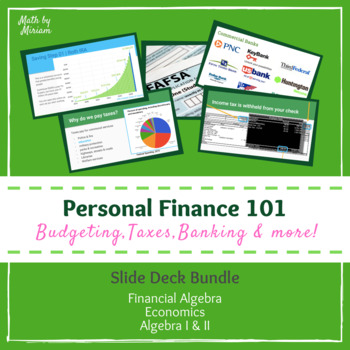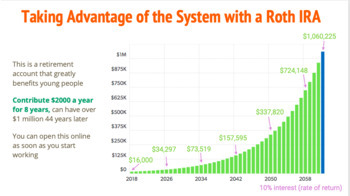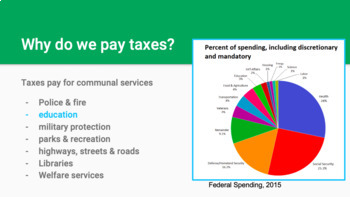Personal Finance 101 | Introduction to Finance Bundle
- Zip
Products in this Bundle (9)
showing 1-5 of 9 products
Bonus
Description
My students always want to understand money more than any other math application. Whether I am teaching Algebra I, Algebra II, or an actual Finance course, I integrate conversations about money into the curriculum. Now you can too!
This bundle includes 8 slide decks to teach your students about money. I have also included the 10 year plan activity to be used at the culmination of the unit or course. Students need an opportunity to apply what they have learned about money to their own life!
Save time researching by using this bundle that addresses budgeting, banking, saving, investing, taxes, credit, and FAFSA. Personal Finance is an increasingly important topic to teach, so don't leave your students hanging even if it isn't in *your* standards!





